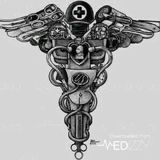

Electrical stimulation therapy EST has been shown to affect most phases of wound healing including inflammation, proliferation and remodelling . In vitro studies have demonstrated that EST can: induce fibroblastic activity by increasing DNA and protein synthesis as well as calcium influx promote migration and activation of macrophages and promote myofibroblast transdifferentiation Furthermore, in vivo studies have demonstrated that EST can: enhance angiogenesis by increasing capillary density, improve tissue oxygenation through increased blood flow and improve tissue tensile strength by increasing collagen deposition . In addition, researchers have suggested that EST has both bacteriostatic and bactericidal effects on microbes that commonly infect wounds

